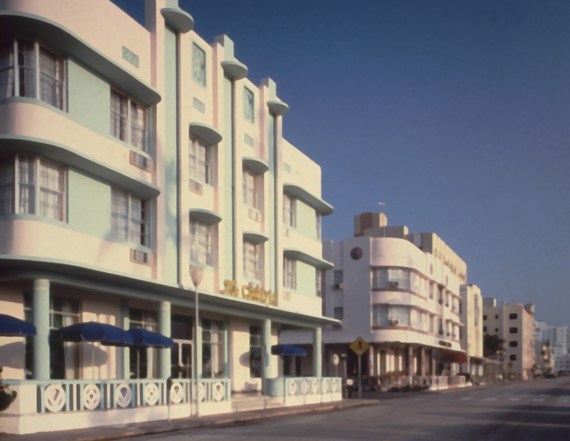Trending
Preserving paradise

Ever since the founding of the Miami Beach Historic Preservation Board more than 30 years ago, developers and preservationists have been tangling over whether it strengthens or weakens local economic development.
“Our job is to help development and preservation coexist,” said Jane Gross, who served as the board’s chair until September of this year. “You want to adaptively reuse these buildings; you don’t want them to sit like a petrified forest with no life in them.”

Credit: The Real Deal South Florida
To be sure, developers typically aren’t known as huge fans of historical preservation efforts. One local developer told The Real Deal that the board’s control gave it too much power. The developer, who did not wish to be quoted by name because he brings business before the board, said that the “restrictive building requirements on Miami Beach make for a difficult environment to create iconic buildings,” adding that this resulted in pushing some financing for redevelopment projects off Miami Beach and into the city of Miami.
For a city that is barely a century old, Miami Beach takes its history and its architecture seriously. With 12 local historic districts and four National Register districts — and with two more local districts planned in the city’s North Beach neighborhood by the end of 2016 — the city presents a challenge to developers who want to build new projects or adaptively reuse existing structures.
Miami Beach’s National Register Art Deco District — which measures roughly one square mile and includes about 800 contributing buildings — is among the largest historic districts in the country. But when it comes to new construction and redevelopment projects, it’s the local districts that really matter.
Any proposal to substantially alter or demolish the exterior and certain interior sections of protected buildings in the local districts is subject to review and approval by the preservation board, which is comprised of seven members appointed by the City Commission. They are tasked with preserving many of the district’s older buildings, which include three distinct architectural styles: Art Deco, Mediterranean Revival and Miami Modernism, known as MiMo.
Local architect Kobi Karp is a regular presenter before the monthly board meetings. He has specialized in Miami Beach projects over the years, beginning with the 1993 restoration of the Hotel Astor, which is located at 956 Washington Avenue.
Among his current projects, he is working on the conversion of the 30-room Sadigo Court Hotel, at 334 20th Street. The project’s developers, Jorge Savloff and Marcelo Tenenbaum, plan to turn the 1936 apartment building into an 81-room hotel by adding a five-story addition. They purchased the property through their real estate company, Miami-based Blue Road, for $13 million this year.
One of Karp’s key tasks is to convince the preservation board to approve the addition of modern amenities for hotel redevelopments — such as rooftop decks, pools and restaurants — that will allow developers to attract 21st-century tourists.

In August, some preservation board members raised concerns about the hotel redevelopment project. Karp returned in September with new plans that increased setbacks for a rooftop pool and mechanical equipment, as well as interior designs that would shrink hotel room size.
Karp is also designing the Chetrit Group’s Collins Park Hotel, a project that will combine five Miami Beach hotels and apartment buildings into a 300-room hotel. The Collins Park will be situated on a 1.65-acre site a block away from Miami Beach’s Bass Museum of Art. Karp said the design would connect adjoining rooftops to create one large amenity space for the hotel guests.
Karp said that working with the preservation board is a collaborative process, “but it’s ultimately up to you as the architect to make the project work, not only architecturally but from a business perspective.”
Debbie Tackett, the preservation and design manager with the city’s planning department, said her staff works with local architects, contractors and engineers so most of the big issues have been worked out by the time a project goes before the preservation board. She said a looming design challenge for the oceanfront community will be setting adaptive reuse guidelines that take the expected global rise in sea levels into account, which would include raising heights for new construction. She said the planning department needs to balance preservation with growth. “We are not a museum. We are not frozen in time.”




